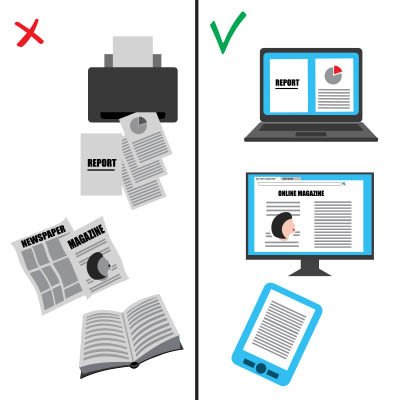Agile Networks Blog
The holiday season can be a busy (and lucrative) time for businesses, but that’s only if your network can handle the increased traffic. A network that buckles under the weight of more traffic than usual can cost you in sales. How do you address this issue so you don’t miss opportunities to make money?
You can start with these five fixes.
Did you know that, in physics, regardless of how much time, sweat, and energy you put into pushing a boulder, if it doesn’t move, the “work done” is seen as zero? The same is true in business… at the end of the day, your investment in your organization and its people is only worthwhile if you see results.
So, you need to ask yourself: how much work are your team members actually getting done? Are they moving the boulder, or are they just trying a lot but not actually making any progress? Let’s examine what often leads to this kind of stagnant struggle and how you can fix it.
There are a bunch of shortcuts that most (if not all, at this point) of us should already know… cut, copy, paste, new tab, things like that. These are the basics. However, if you really want to show off for the boss—blowing them away with your efficiency and professionalism—some more advanced options are also handy to know.
Let’s go over some shortcuts to take advantage of:
Business is already complicated enough without having to remember all of your passwords. Unfortunately, logins and sign-ons are a necessary part of operations, and without them, work isn’t going to get anywhere. All that said, there is a solution to the problem of having too many accounts with too many unique credentials, and it all starts by asking a simple question.
Running a business can feel like a constant battle against inefficiency. There are innumerable reasons an organization doesn’t meet productivity standards. Fortunately, however, technology provides powerful tools to identify and eliminate these problems. Here's how you can use technology to find and fix inefficiencies in your business.
There’s a specific stress that comes from the disconnect between the money you invest in your business IT and the value that comes back from it. Sure, you know what the money is being spent on… but that’s a far cry from knowing how these investments are shifting the needle.
Let’s discuss the importance of understanding what your IT is telling you and when you need to demand more information… politely, of course.
A cluttered workspace can lead to a cluttered mind. Whether you're working from home or in an office, keeping your workspace clean and organized can significantly boost your productivity, reduce stress, and even spark creativity. It's not just about aesthetics; it's about creating an environment where you can thrive.
Here are five tips to help you maintain a pristine and productive workspace:
The grind of daily business operations can feel relentless. From overflowing inboxes to endless task lists and scattered information, it's easy to get bogged down in the minutiae. That’s why it's essential to know—and utilize—the right technology to transform tedious tasks into strategically streamlined workflows, providing you and your team with more time and clarity. This month, we’ll take a look at some of the technology you can use to take a little stress off your grind.
Has this ever happened to you?
It’s late, a long day of work behind you, but you’re finally home and able to relax. Just as you get comfortable, your phone dings. You glance at your phone. It’s a work email… and if you’re like most, you’ll be itching just to check it and get it over with. The problem is, each time you do so, you whittle away the line between work and the rest of your life. This “always on” impression our technology provides has contributed to a few significant issues.
Let’s see if we can address these issues.
Time isn't just money; it's the entire vault. The right tools and strategies can transform not just your IT infrastructure, but your entire workflow. Today, we're going to talk about a surprisingly simple, yet profoundly effective, time management method: the Pomodoro Technique. Let’s take a look at this useful strategy that can keep you focused and on task.
Productivity is one of the most common business goals today, with many doing everything they can to optimize it. In fact, today is officially World Productivity Day, highlighting the significant importance placed on this specific metric.
Despite this, productivity can often feel unattainable… regardless of how busy one is throughout the day. Let’s fix that and consider three habits that will greatly support your work and help make the most of your time.
Many—we’d go so far as to say most, at some times—businesses have a pretty concrete view of the role that their IT plays in operations: cost center, money pit, necessary evil.
Something we’ve realized, however, is that these impressions are simply warning signs that a business’ technology strategy and approach need some attention. Let’s identify three signs that might be all too familiar to you, and address what can be done to change course and help turn your IT into a contributing part of your overall productivity.
As the water cooler whispers about artificial intelligence get louder, workers are actively becoming worried about the status of their jobs. The idea of robots taking jobs can sound alarming, but knowledge is power. By understanding how AI works and what it can do for a business, employers and employees alike can gain some perspective and peace of mind.
In nearly every office, the printer hums along, a familiar backdrop to the workday. Have you ever paused to consider how much all that printing really adds up? If the average office worker might use around 10,000 sheets of paper annually, as some studies suggest, that is far too high with the technology that’s available to us today. That’s a significant impact on budgets and the environment.
You see it everywhere, again and again: how much return an investment into proper business technology will bring, with little to no context behind these claims. We want to fix that.
Let’s examine why so much information about modern IT options can be less than helpful, and see if we can’t clarify what it means. Simplifying tech for the businesses we work with is one of our primary goals, after all.
Growing your business means making smart choices, and that definitely includes getting the right technology. Finding the right tech can often feel like a balancing act: you need powerful tools to compete and grow, but you also need to be mindful of your budget.
At Agile Networks, serving businesses right here in Eastern Pennsylvania, Philadelphia, Delaware and New Jersey, we help you find that sweet spot where your tech investments truly support your goals without unnecessary costs.
Over time, you might add new technology solutions to your infrastructure to solve specific problems. Before you know it, you might have an overwhelming amount of technology that keeps your business operational. This issue—tech sprawl—can hold your business back from efficient operations, but don’t worry… we have a solution for you.
If you want your business to succeed, you need to take care of your employees, but businesses sometimes let this important task slip in the throes of the day-to-day. Deloitte estimates that around 8 out of every 10 wage workers show signs of burnout. So the question then becomes… What are you doing about it?
Everyone relies heavily on software. From operating systems, to Internet browsers, to applications, software runs the world. For a long time, many software titles were seen as too expensive as you had to purchase the software license (usually a year), the hardware to run it from, and additional hardware to disseminate it. Nowadays, there is a better option: Software-as-a-Service.
Customer Login
News & Updates
Contact Us
Learn more about what Agile Networks can do for your business.
Agile Networks
705B Moore Industrial Park
Prospect Park, Pennsylvania 19076




















